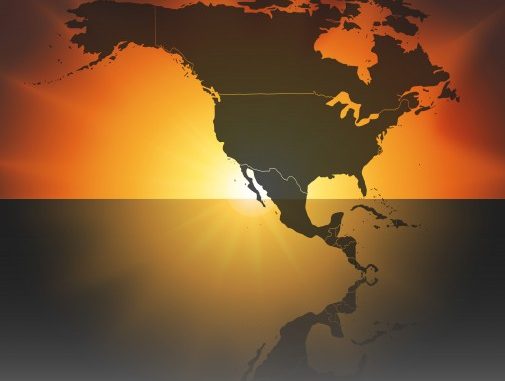
by Bill McKenzie
There was a period in the 1990s when the world was focused on Europe as a major economic power. The continent was integrating through the European Union while former Soviet satellites like Poland were emerging economically. Naturally, companies were looking at Europe and its population of then almost 400 million people as a place to sell products and services. The EU was seen as a veritable cash machine.
Then, along came China. Its economy roared in the 2000s, after growing as well in the 1990s. Companies saw China too as a cash machine, with chances to sell or produce goods there in a way never before. Who wouldn’t be interested in a nation of well north of one billion consumers?
All of that made plenty of sense. It still does.
But, when you think of a large bloc of people, the 450 million or more people who make up the three countries of the United States, Mexico and Canada cannot be ignored. We have our own economic powerhouse right here in our backyard.
The North American Free Trade Agreement came about in the early 1990s to capitalize upon these makers. The greater flow of goods and services has shown positive results, too. As one example, trade has tripled in North America and foreign direct investment has grown six-fold.
Here’s another compelling fact: The U.S. had $1.2 trillion in trade with Canada and Mexico in 2011, making them our first and third largest trading partners, respectively. What’s more, that volume of trade was equal to our trade with Japan, China, Korea, South Africa, Brazil, Russia and India – combined.
Obviously, there is much going on within this alliance of nations. Still, the integration of our economies has not been seamless. For example, the U.S. took too long to let qualified Mexican trucks moving goods into our country. And Mexico only recently started to open its energy industry to international companies.
The question is, will our three nations be able to sufficiently capitalize upon our potential so that the next ten years will be the North America Decade? Energy. Trade. Immigration. Education. Economic Integration. Natural Resources. These are all part of the potential, and each come with challenges.
The Bush Institute is hosting a conference today with the U.S. Chamber of Commerce to discuss some of these challenges. As part of the conference, Institute fellows Bud Weinstein and Matthew Denhart produced papers that chart a course toward greater integration, including a more sensible flow of immigrants across our borders. Look on this blog later for more details from the conference discussions.
North America’s energy potential alone is enough to get one’s attention. As Weinstein notes in his paper, Canada has increased its oil production more than 50 percent over the last decade. Hydraulic fracturing and horizontal drilling are leading to enormous oil and gas production from shale formations in the U.S. And Mexico’s President Enrique Pena Nieto just signed legislation to end state control of his nation’s energy industry.
Yet there are numerous problems in realizing all that production, which stands to make North America a net exporter of oil and natural gas. One hurdle is making sure that the energy revolution doesn’t get swamped by concerns over the amount of water that goes into fracking a well.
Water supplies are an important part of the North America challenge in another way. The Wall Street Journal reported in mid-March how droughts in parts of the country are driving up food prices. The U.S. Department of Agriculture estimates they will rise between 2.5% and 3.5% this year, up from 1.4% last year.
U.S. states like California are not the only places wrestling with dry conditions. Northern Mexico has faced its own drought conditions over parts of the last decade. This has put pressure on the Rio Grande River, which is in the best interest of both nations to preserve.
Finally, there is the issue of education. The development of North America’s potential starts in the quality of its schools. To the extent they are raising expectations and improving achievement levels, they will allow their citizens to make good use of their natural talents. At the same time, they will allow each country separately and together to better grow their economy.
Development of human capital is not easy either, especially when you think of the three nations together. Given immigration flows, what happens in one nation’s schools affects those in another country. If students migrating from one country to the next are not prepared for more challenging courses, they will soon fall behind.
There are answers to many of these problems, which the Bush Institute will spotlight as it examines North America’s potential. They start with having the right strategies for energy development, economic integration, immigration flows, natural resources and human capital.
Follow us on facebook and twitter



